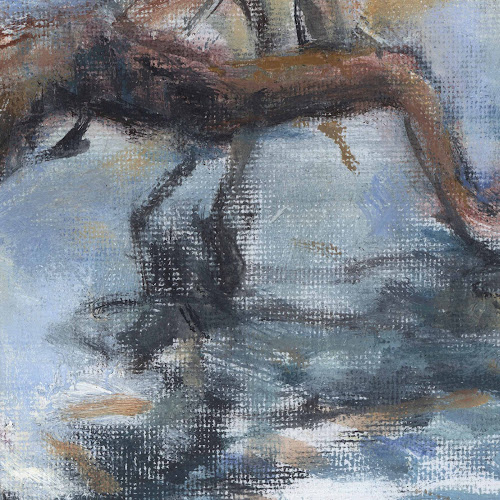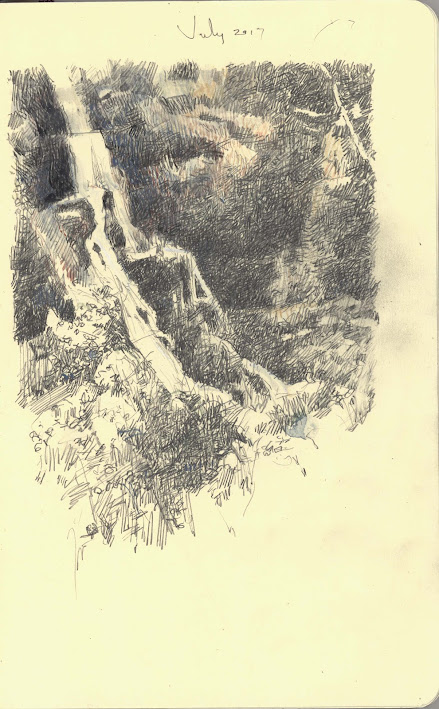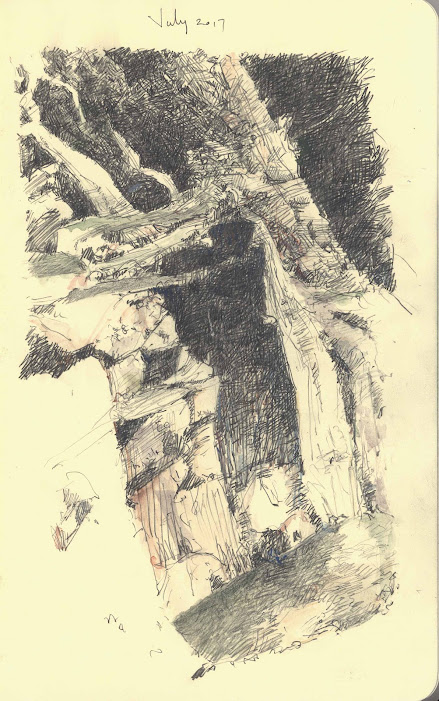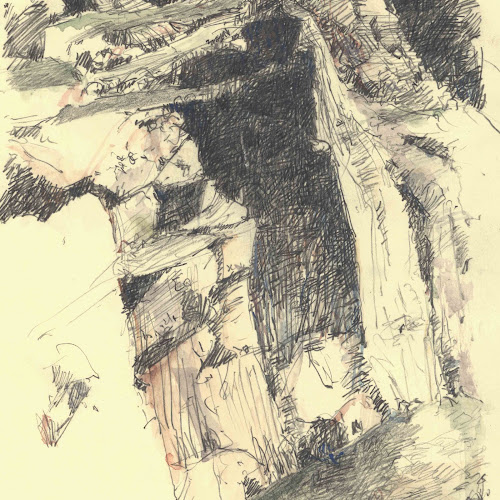James Brown
“Cannas”, 2017
Pastel and oil
on canvas
Size: 25.5 x 20.2
cm
Painting
flowers has been an ongoing interest and the striking reds of Canna lily flowers are
particularly attractive. Their vibrant hues are impossible to overlook,
commanding attention and filling space with energy.
My artistic
journey with this piece began with a pastel drawing on canvas, a medium I adore
for its ability to create soft, fluid blends of colour. However, the inherent
challenge of pastels—their tendency to smudge—prompted me to incorporate oil
paint into my process. By layering glazes and brushstrokes of oil paint, I
ensured that the colours would remain vibrant and fixed on the canvas. This
combination of pastels and oils yields an effect reminiscent of watercolour, as
the white gesso layer beneath plays a crucial role in enhancing the luminosity
of the image.
Regarding composition, this painting represents a departure from my usual approach. Typically, I prefer to illuminate my subjects with light entering the composition from the upper left, providing a sense of depth and perspective. In this instance, I consciously chose a different angle of lighting, allowing the light to come from the lower right and slightly behind the flowers. This technique, known as “contre-jour” (against the light), was intentional, aiming to create a dynamic interplay of shadows and highlights that amplifies the intense orange-reds of the Cannas.




























































